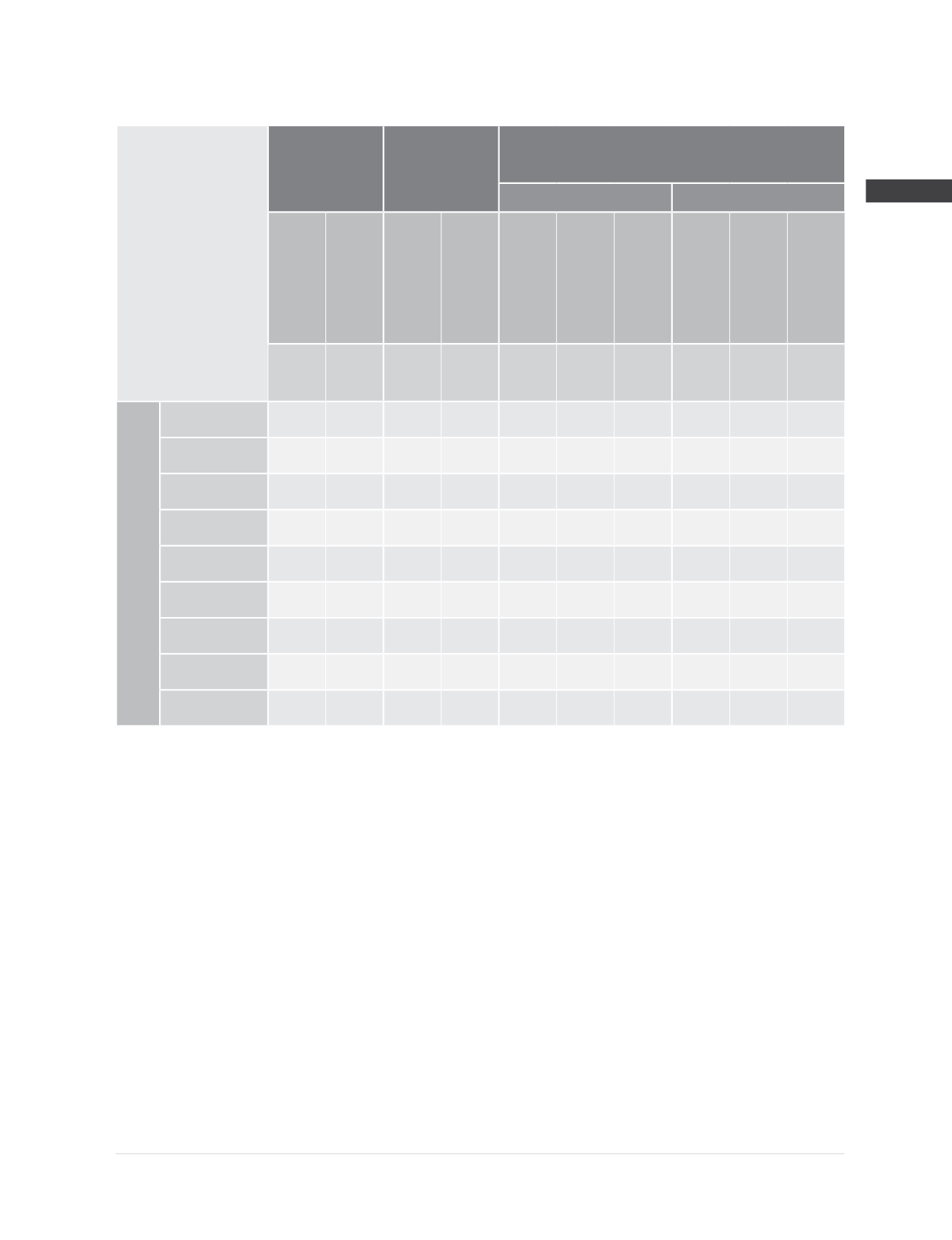
© 2014 Foundation Supportworks
®
,
Inc.
All Rights Reserved
p 61
APPENDIX 2A
HELICAL PRODUCT RATINGS, PROPERTIES AND DETAILS
Chapter 2
Helical Foundation Systems
Helical Pile Capacities Summary
Installation
Torque
Maximum
Soil
Capacity
(7)
Shaft Max Allowable Capacity
(4)
P
n
/Ω
Compression
(3)
Tension
Correlation
Factor
Max Rated
Torque
Ultimate
Allowable
Plain
Plain
Corroded
(1)
Galvanized
Corroded
(1,2)
Plain
Plain
Corroded
(1)
Galvanized
Corroded
(1,2)
K
t
(ft
-1
)
T
(ft-lb)
Q
u
(kips)
Q
a
(kips) (kips) (kips) (kips) (kips) (kips) (kips)
Shaft
HA150
10
(5)
6,500 65.0 32.5 29.8
(8)
27.0
(8)
27.1
(8)
29.8 27.0 27.1
HA175
10
(5)
10,000 100.0 50.0 59.6
(8)
54.1
(8)
54.2
(8)
59.6 54.1 54.2
HP237
10
(6)
2,500 25.0 12.5 35.1 26.3 32.6 19.3 13.6 16.9
HP287
9
(5)
5,600 50.4 25.2 55.8 45.2 52.9 30.6 23.6 27.6
HP288
9
(5)
7,900 71.1 35.5 74.0 63.6 71.1 41.6 34.1 38.1
HP350
7
(5)
16,000 112.0 56.0 117.5 104.0 113.8 72.3 62.2 68.4
HP450
6
(6)
22,000 132.0 66.0 123.3 109.1 119.3 59.1 50.8 56.7
HP662
(9)
N/A 35,000 N/A N/A 182.6 157.4 175.6 98.7 83.3 93.0
HP700
(9)
N/A 50,000 N/A N/A 246.9 220.5 239.6 135.0 118.8 130.5
(1)
Corroded capacities include a 50-year scheduled sacrificial loss in thickness per ICC-ES AC358.
(2)
Hot-dip galvanized coating in accordance with ASTM A123. Coatings on fasteners vary by product line. See individual shaft specification
sheets for more details.
(3)
Allowable mechanical compression capacities consider continuous lateral soil confinement in soils with SPT blow counts ≥ 4. Piles with
exposed unbraced lengths or piles placed in weaker or fluid soils should be evaluated on a case by case basis by the project engineer.
(4)
Listed mechanical capacities are for the shaft and coupled connections only. System capacity should also not exceed the installed
allowable torque-correlated soil capacity or the allowable capacity of the respective bracket (see additional bracket tables).
(5)
Listed default K
t
factors are consistent with those listed in ICC-ES AC358. These values are generally conservative. Site-specific K
t
factors
can be determined for a given project with full-scale load testing.
(6)
Listed K
t
factors are those recommended by FSI. Site-specific K
t
factors can be determined for a given project with full-scale load testing.
(7)
Soil capacities listed are at maximum installation torque. Ultimate soil capacity is based on the equation Q
u
= K
t
x T. Allowable soil capacity
is obtained by dividing the ultimate value by the appropriate factor of safety (Q
a
= Q
u
/ FOS). FOS is most commonly taken as 2.0, although
a higher or lower FOS may be considered at the discretion of the helical pile designer or as dictated by local code requirements. System
capacity should also not exceed the mechanical capacity of the shaft or those listed in the respective bracket capacity tables.
(8)
Square shaft piles may be considered for compression applications in soil profiles that offer sufficient continuous lateral support; e.g., in
soils with SPT blow counts ≥ 10. In profiles or conditions that limit pile stability, buckling analyses should be considered by the project
engineer, taking into account discontinuities and potential eccentricities created by the couplers.
(9)
FSI’s larger diameter product lines are fully customized on a project specific basis. All values provided for these products are for general
informational purposes only. Actual capacities (including any related to installation torque) will vary based on several project specific
variables such as coupler details, end termination details, site specific soil profiles, and even material availability. Full scale load tests are
recommended to confirm soil capacities determined in the design phase of the project.


